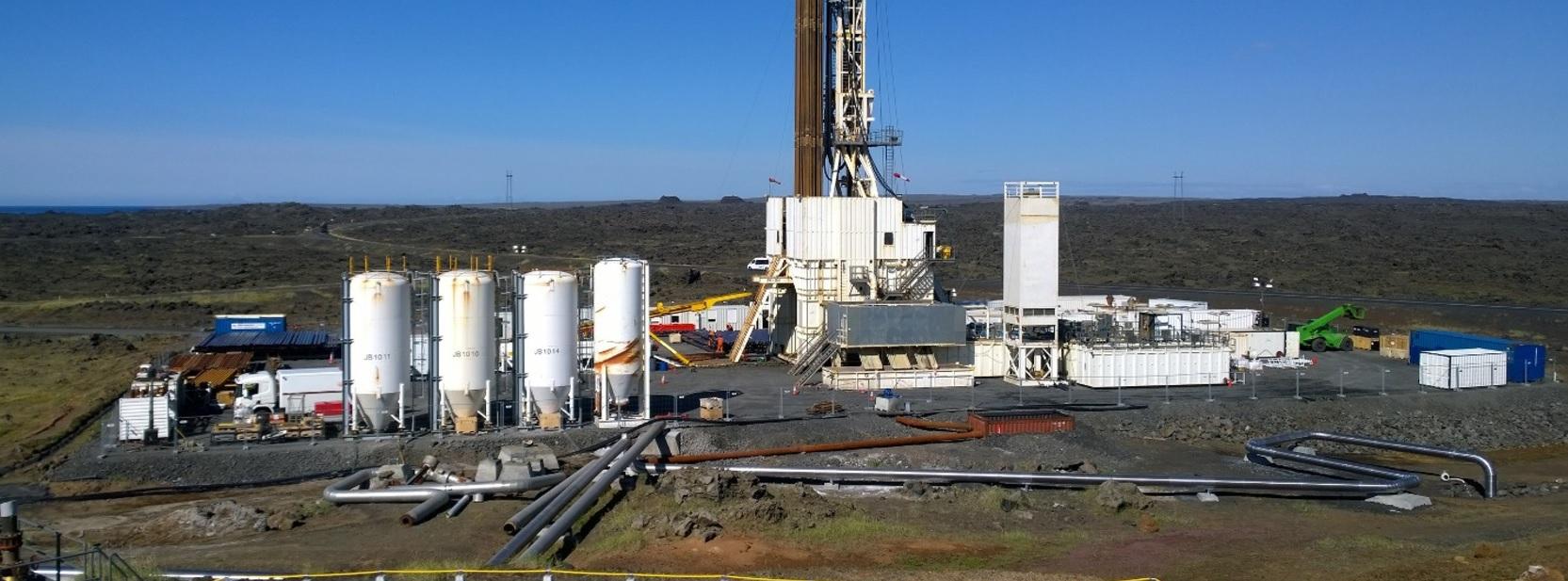Iceland Drills Deep Into Volcanoes For New Clean Energy Source
Iceland has been the gold standard in geothermal energy, and they've found a way to improve upon it. After years of research, they were able to drill deep into volcanoes to find an incredibly hot substance that creates a clean energy alternative.
Updated May 24 2019, 3:53 a.m. ET
Iceland is using volcanoes as a new sustainable source for their energy. No, they won’t be trying to make the volcano erupt to use the lava to create electricity, but the process is something similar. Dubbed as “Thor,” engineers are hoping they’ll find enough hot steam to power their big cities.
The Iceland Deep Drilling Project (IDDP) is fairly straightforward. People will drill into these volcanoes to the point where they can find “supercritical” steam. The water the steam comes from is described as an enhanced fluid, but it doesn’t really take the form of gas or a liquid. That’s because the temperature of this suppressed water is roughly 800 degrees Fahrenheit.
Drilling took roughly six months to complete, from last August to January 2017, and it goes a record three miles into the surface. HS Orka, an energy company in Iceland, has been behind the project. While it is only in the experimental stage, this isn’t the first idea to drill into the Earth to get energy. Known as “geothermal energy,” the steam from the hot water in the Earth’s surface is able to move turbines to create power.
However, what makes this different is drilling into volcanoes to get even hotter temperatures. It potentially could create up to 10 times more energy than using gas or oil. Iceland has been the standard of using geothermal energy, and “Thor” is considered an exciting upgrade to fossil fuels. The new energy is expected to fuel the city of Reykjavik’s population of 338,000 and the numerous visitors it has per year.
IDDP first had the idea back in 2009 when they ran into a magma reservoir. After more research, exploring the territory, and getting the necessary resources, they were recently able to dig into the volcano to obtain the “supercritical’ steam.
That being said, this new method isn’t completely perfect. Drilling into the volcanoes creates carbon dioxide emissions itself. Norwegian sustainable finance specialist Martin Norman told Phys.org that this “supercritical” substance is also not completely renewable and that Iceland hasn’t been “meeting the international objectives in terms of reducing greenhouse gas emissions.”
A report from the University of Iceland last February backs up his claim. The country would not be able to meet the standards agreed upon in the “Paris Agreement” -- also known as “COP21” -- with the United Nations Framework Convention on Climate Change back in 2015. In the agreement, there’s a push to limit the global temperature increase to 1.5 degrees Celsius and to create low greenhouses gases. The latter hasn’t been achieved by the country and it is “predicted to rise by between 53 and 99 percent by 2030 from 1999 levels.”
Iceland continues to work on these issues. They throw heavy taxes on any CO2 emissions and they’re hoping to have all cars run on electric power in the near future. “Thor” should also have long-term success. The carbon dioxide emissions aren’t at the levels of fossil fuels, according to HS Orka engineer Albert Albertsson in the same Phys.org report.

